The reflected ray leaves the mirror at not the same angle at which the incident ray strikes it. _____
To solve the question, we need to analyze the behavior of light when it strikes a mirror. The question states that the reflected ray leaves the mirror at not the same angle at which the incident ray strikes it. We will determine whether this statement is true or false by applying the law of reflection.
1. Understanding the Law of Reflection: The law of reflection states that when a ray of light (incident ray) strikes a reflective surface (like a mirror), the angle of incidence (i) is equal to the angle of reflection (r). This can be expressed mathematically as:
Angle of Incidence (i)=Angle of Reflection (r)
2. Defining Angles:
- The angle of incidence (i) is the angle formed between the incident ray and the normal (a line perpendicular to the surface at the point of incidence).
- The angle of reflection (r) is the angle formed between the reflected ray and the normal.
3. Visualizing the Scenario: Imagine a flat mirror:
- Draw a normal line at the point where the incident ray strikes the mirror.
- Mark the angle of incidence (i) and the angle of reflection (r).
4. Applying the Law: According to the law of reflection:
i=r
This means that the angle at which the incident ray strikes the mirror is equal to the angle at which the reflected ray leaves the mirror.
5. Conclusion: Since the statement claims that the reflected ray leaves the mirror at not the same angle as the incident ray, this contradicts the law of reflection. Therefore, the statement is false.
Final Answer:
The statement "The reflected ray leaves the mirror at not the same angle at which the incident ray strikes it" is false.
---
Angle of Incidence (i)=Angle of Reflection (r)
- The angle of incidence (i) is the angle formed between the incident ray and the normal (a line perpendicular to the surface at the point of incidence).
- The angle of reflection (r) is the angle formed between the reflected ray and the normal.
- Draw a normal line at the point where the incident ray strikes the mirror.
- Mark the angle of incidence (i) and the angle of reflection (r).
i=r
This means that the angle at which the incident ray strikes the mirror is equal to the angle at which the reflected ray leaves the mirror.
The statement "The reflected ray leaves the mirror at not the same angle at which the incident ray strikes it" is false.
Topper's Solved these Questions
- LIGHT ENERGYBOOK - ICSECHAPTER - LIGHT ENERGYEXERCISE - EXERCISE-5.1 (Objective Type Questions) (D. Tick the most appropriate answer)
5 Videos
- LIGHT ENERGYBOOK - ICSECHAPTER - LIGHT ENERGYEXERCISE - EXERCISE-5.1 (Objective Type Questions) (E. Match the statements in column A, with those in Column B.)
1 Videos
- LIGHT ENERGYBOOK - ICSECHAPTER - LIGHT ENERGYEXERCISE - EXERCISE-5.1 (Objective Type Questions) (B. Statements given below are incorrect. Write the correct statements)
5 Videos
- HEAT TRANSFER BOOK - ICSECHAPTER - HEAT TRANSFER EXERCISE - Picture Study
2 Videos
- MATTER BOOK - ICSECHAPTER - MATTER EXERCISE - THEME ASSIGNMENT
25 Videos
Similar Questions
Fig. shows an incident ray AO and the normal ON on a plane mirror. The angle which the incident ray AO makes with mirror is 30∘.
Draw the reflected ray
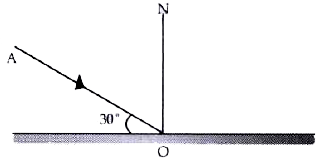
View SolutionFig. shows an incident ray AO and the normal ON on a plane mirror. The angle which the incident ray AO makes with mirror is 30∘.
The angle between the incident and reflected rays.
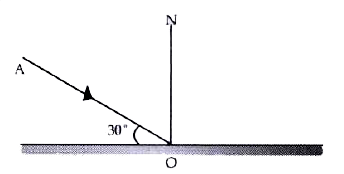
View Solution
Knowledge Check
The angle of incidence on a plane mirror is 30∘ . The angle between the incident ray and the reflected ray is
A30∘B15∘C60∘D90∘
Fig. shows an incident ray AO and the normal ON on a plane mirror. The angle which the incident ray AO makes with mirror is 30∘.
Find the angle of incidence.
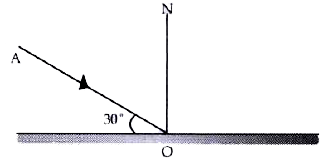
View SolutionDraw a diagram to show the reflection of a ray of light by a plane mirror. In the diagram, label the incident ray, the reflected ray, the normal, the angle of incidence and the angle of reflection.
View SolutionShow that a ray of light reflected from a plane mirror rotates througha an angle 2θ when the
mirror is rotated through an angle θ about its axis perpendicular to both the incident ray and
the normal to the surface.
View SolutionWhen a ray of light strikes a plane mirror along the normal, the angle of incidence is :
View SolutionIn Fig. 6.33, PQ and RS are two mirrors placed parallel to each other. An incident ray AB strikes the mirror PQ at B, the reflected ray moves along the path BC and strikes the mirror RS at C and again reflects back along CD. Prove that AB || CD.
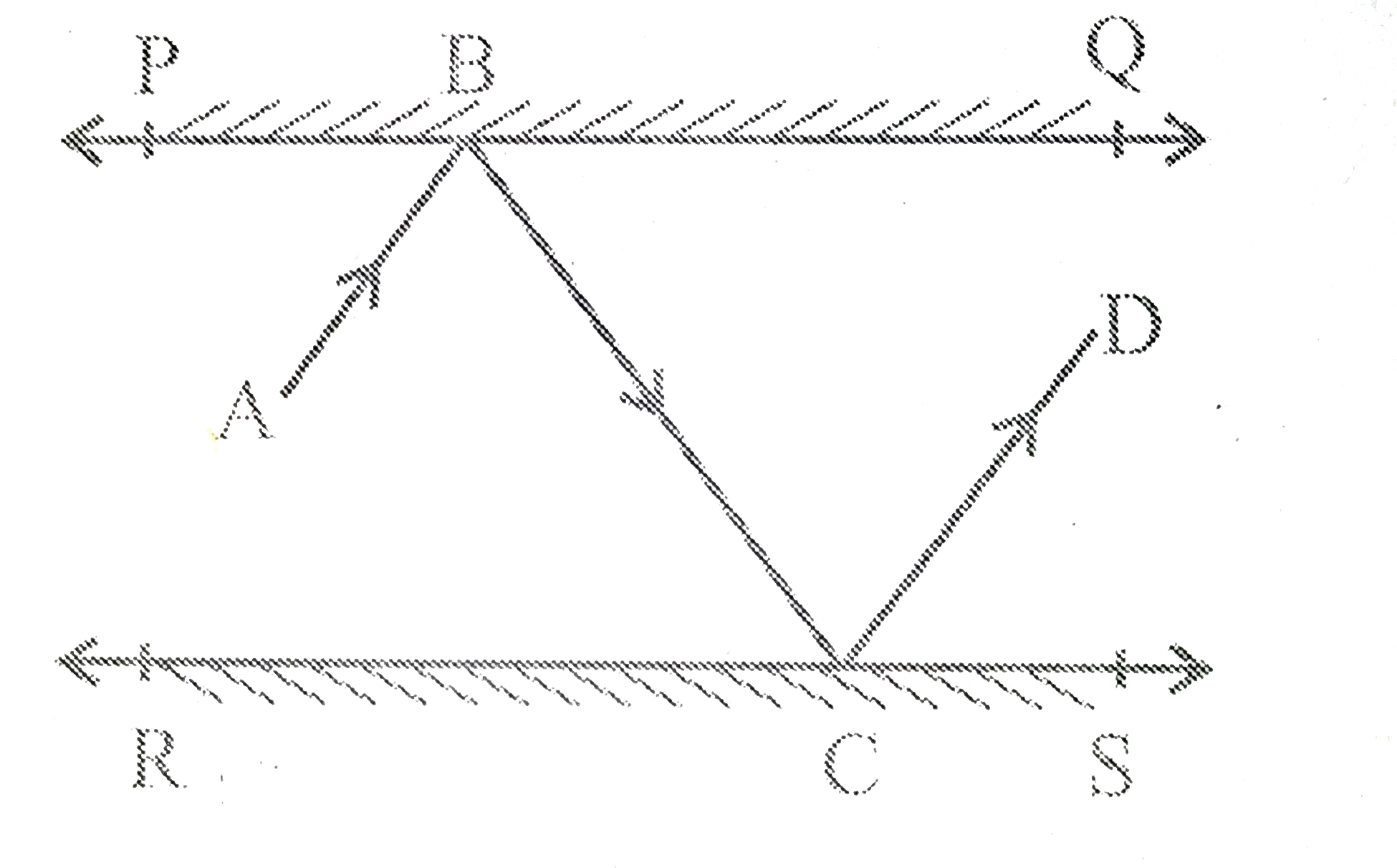
View SolutionIn Figure A, draw the reflected ray from the mirror and refracted ray into the air.

View SolutionThe diagram below shows a light ray striking and reflecting from a plane mirror AO is the incident ray and OB the reflected ray. The angle between the incident ray and the reflected ray is 120∘.
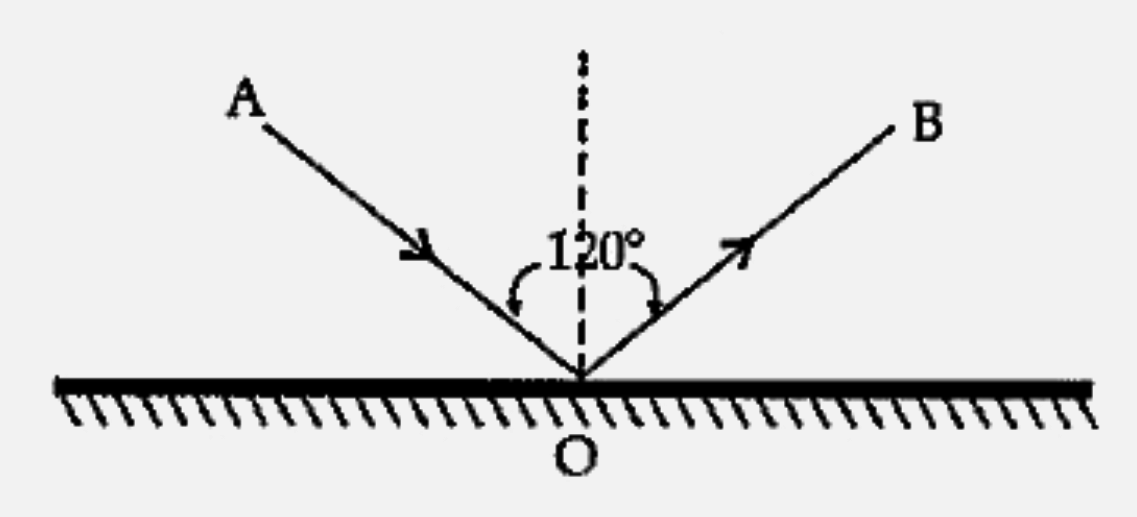
What is the value of the angle of reflection?
View Solution
